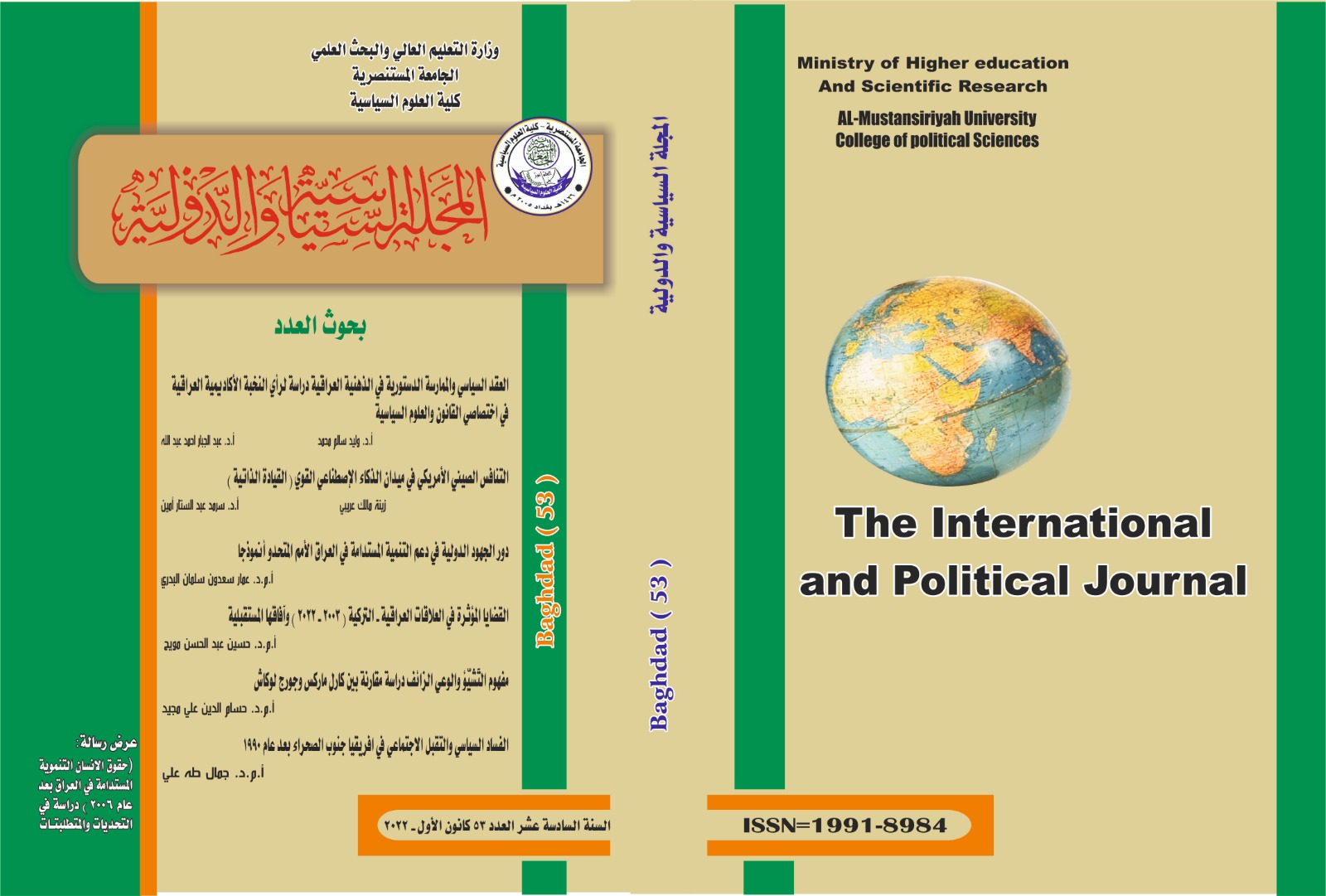Raphael Lemkin , Axis Rule in Occupied Europe: Laws of Occupation, Analysis of Government
Abstract
Perhaps no crime can match genocide. Classified by the International Criminal Tribunal for Rwanda as a "crime of crimes", scholars such as William Schabas have asserted that, in the hierarchy of crimes, genocide "belongs to the top of the pyramid". Others have described it as the "most heinous international crime" or the most heinous and heinous of all, the greatest denial of civilization and solidarity.Therefore, the reprinting and publication of the pioneering book “The Rule of the Axis in Occupied Europe” by the Polish jurist Raphael Lemkin (1900-1959) represents a cultural event par excellence. The book coined the term “genocide” for the first time, and defined it as one of the subjects of international law. This second edition of Lemkin's book in 2008 comes at a time when the field of genocide studies has developed. ( ), a field that has not yet crystallized in Arab and Iraqi universities. Also, the book (Lemkin) was not read at all in the Arab world and no translation of the book or one of its chapters was issued despite the passage of nearly eight decades since its publication, and it was read again in the Western academic world thanks to this second edition written by the American diplomat (Samantha) Bauer), and wrote another foreword to the book, the genocidal scholar and expert in international criminal law (William Schabas).While the term "genocide" came to mean the extermination of a people, Lemkin used it more broadly to describe all programs that sought to increase the "Aryan" birth rate while working to annihilate the social, cultural, and economic independence of non-Germanic peoples during Nazi rule. When Lemkin coined the term "genocide" in 1944, he brought about a paradigm shift in both international law and the social sciences. Indeed, in the interwar period, Lemkin was struggling to establish international protection for minorities. The tragic fate of the Ottoman Armenians in 1915, in particular, confirmed his view that international law should be established to make the deliberate and systematic extermination of national or religious minorities by the state a punishable crime. Lemkin has made his mark not only in international law, but also in the social and historical sciences. With his first definition of genocide he revolutionized the academic understanding of mass violence:“By ‘genocide’ we mean the destruction of a nation or an ethnic group. . . . In general, genocide does not necessarily mean the immediate destruction of a nation, except when it is done by the mass killing of all members of the nation. Its purpose is to indicate a coordinated plan of various actions which aimed at destroying the basic foundations of the life of national groups, with a view to eliminating the groups themselves.” (Lemkin) emphasized that the destruction of national, ethnic or religious groups was often carried out through non-lethal forms of violence. Hence, genocide is nothing more than a large-scale massacre. According to Lemkin, the commission of genocide should be understood as a comprehensive social practice that affects all aspects of collective life.
Additional Files
Published
How to Cite
Issue
Section
License

This work is licensed under a Creative Commons Attribution-NonCommercial-NoDerivatives 4.0 International License.
Journal Policies
All articles published in the International and Political Journal are licensed under a Creative Commons Attribution 4.0 International License. This means that the Authors can:
The journal allows reuse and remixing of content in accordance with a Creative Commons license.
Copy and redistribute the material in any medium or format.
Policy of publishing in The International and Political Journal
The journal is committed to the ethics of scientific publishing, and according to the publication ethics report of the journal.
The decision to publish is based on the value of the scientific research, to what extent it meets the conditions of publication approved, the declared policy of the journal, and its specialty.
It is based on the principles of the scientific honesty, and originality of research submitted for publication. It deals with the names of reviewers and their reports with great confidentiality.
The opinions published in the journal reflect the views of the authors, and not necessarily reflect the opinion of the editorial board.
The journal does not adhere to the publication of whatever comes to it. The time and place of publication are subject to technical considerations adopted in the editorial plan of the journal.
The journal does not abide to return the research papers to their owners whether accepted for publication or not.
The researcher is to be provided with the acceptance of publication within about 24 WEEKS. As for publication, the editorial board reserves its right in priority of publishing. The arrangement of the research papers in the same issue is subject to technical standards.
Diversify of publishing papers from solid universities and scientific centers from inside and outside Iraq is preferable.
The journal maintains hard copies and electronic archive of the published issues in addition to the publication of the research papers.
The journal also publishes the issues electronically through the website of the journal, and the official website of the Iraqi academic journals, and makes it possible to download. Thus, documenting the intellectual property of the research papers and publishing them internationally is achieved.
Terms of publication may be modified when necessary with no previous notice.
The researcher obtains a copy of his research paper. If he wishes to buy acopy of the journal, the volume costs ID 10000 from inside Iraq and $8from the outside.
The Editorial Board considers that the researcher who submits his research paper for publication in the journal has already read the terms and conditions of publication and agreed on them.
The journal publishes the research papers of the postgraduate students in special issues for this purpose.
Stages of editing and publishing:
The researcher undertakes that his research has never been published before, and has not been submitted for publication to other sides until the end of the evaluation procedures and the acceptance of publication in the journal.
The research papers submitted for publication are to subjected for preliminary examination by the editorial board to determine their suitability for the journal specialization, its policy and the safety of scientific research procedures, and then to indicate its eligibility for scientific evaluation. The editorial board may apologize for accepting the research all together or require the researcher to amend it in accordance with the journal policy before sending it to editors.
After conducting the scientific evaluation, the research paper returns back to the researcher to make the required amendments within a maximum of two weeks.
A copy of the final research paper is to be submitted to the secretariat of the journal a hard copy and a soft copy on a CD, in both Word and PDF format. The researcher is fully responsible for the typing and linguistic mistakes after submitting the full research paper on a CD.
Plagiarism checker
All research papers are subjected to Turnitin program to uncover plagiarism before being sent to scientific evaluation. The researcher undertakes a written pledge to take the legal and moral responsibility, in the event of the emergence of plagiarism or taking from the efforts of other researchers, without a reference to them. The journal uses appropriate anti-plagiarism software, such as Turnitin to check for plagiarism.
Dealing with Allegations of Research Misconduct
The Journal shall take reasonable and serious steps to identify and prevent the publication of papers where research misconduct has occurred, including plagiarism, citation manipulation, and data falsification/fabrication.
Scientific Evaluation:
Scientific evaluation strengthens the research paper submitted to the journal and helps to take the appropriate decision by the editorial board to publish it. It also benefits the researchers to improve and correct their research papers.
The research paper is sent to three evaluators in the same specialty to evaluate












